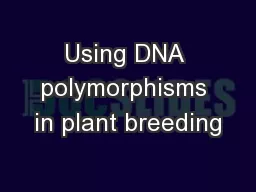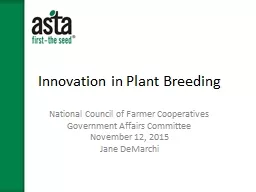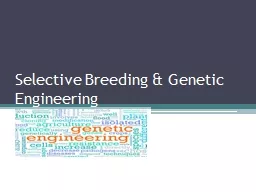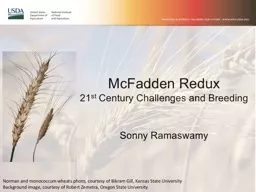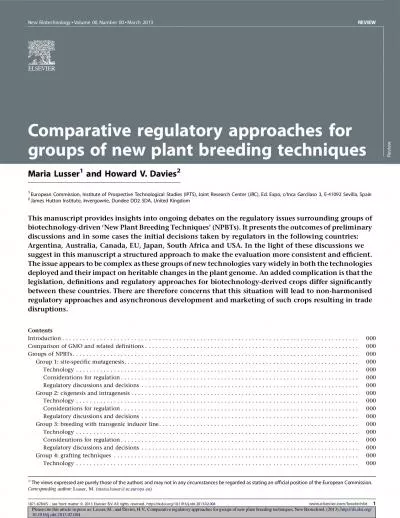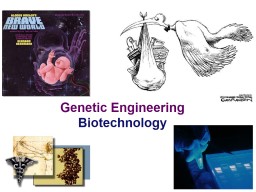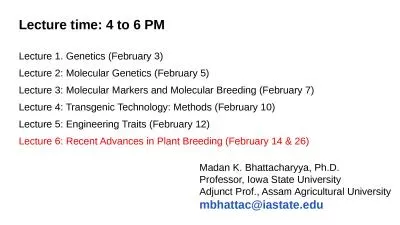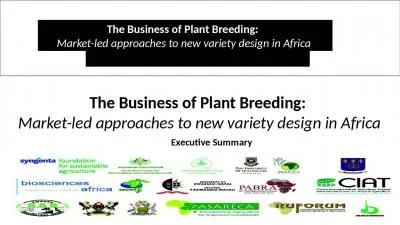PPT-Using DNA polymorphisms in plant breeding
Author : liane-varnes | Published Date : 2018-09-25
How many genes determine important traits Where these genes are located How do the genes interact What is the role of the environment in the phenotype Molecular
Presentation Embed Code
Download Presentation
Download Presentation The PPT/PDF document "Using DNA polymorphisms in plant breedin..." is the property of its rightful owner. Permission is granted to download and print the materials on this website for personal, non-commercial use only, and to display it on your personal computer provided you do not modify the materials and that you retain all copyright notices contained in the materials. By downloading content from our website, you accept the terms of this agreement.
Using DNA polymorphisms in plant breeding: Transcript
Download Rules Of Document
"Using DNA polymorphisms in plant breeding"The content belongs to its owner. You may download and print it for personal use, without modification, and keep all copyright notices. By downloading, you agree to these terms.
Related Documents

